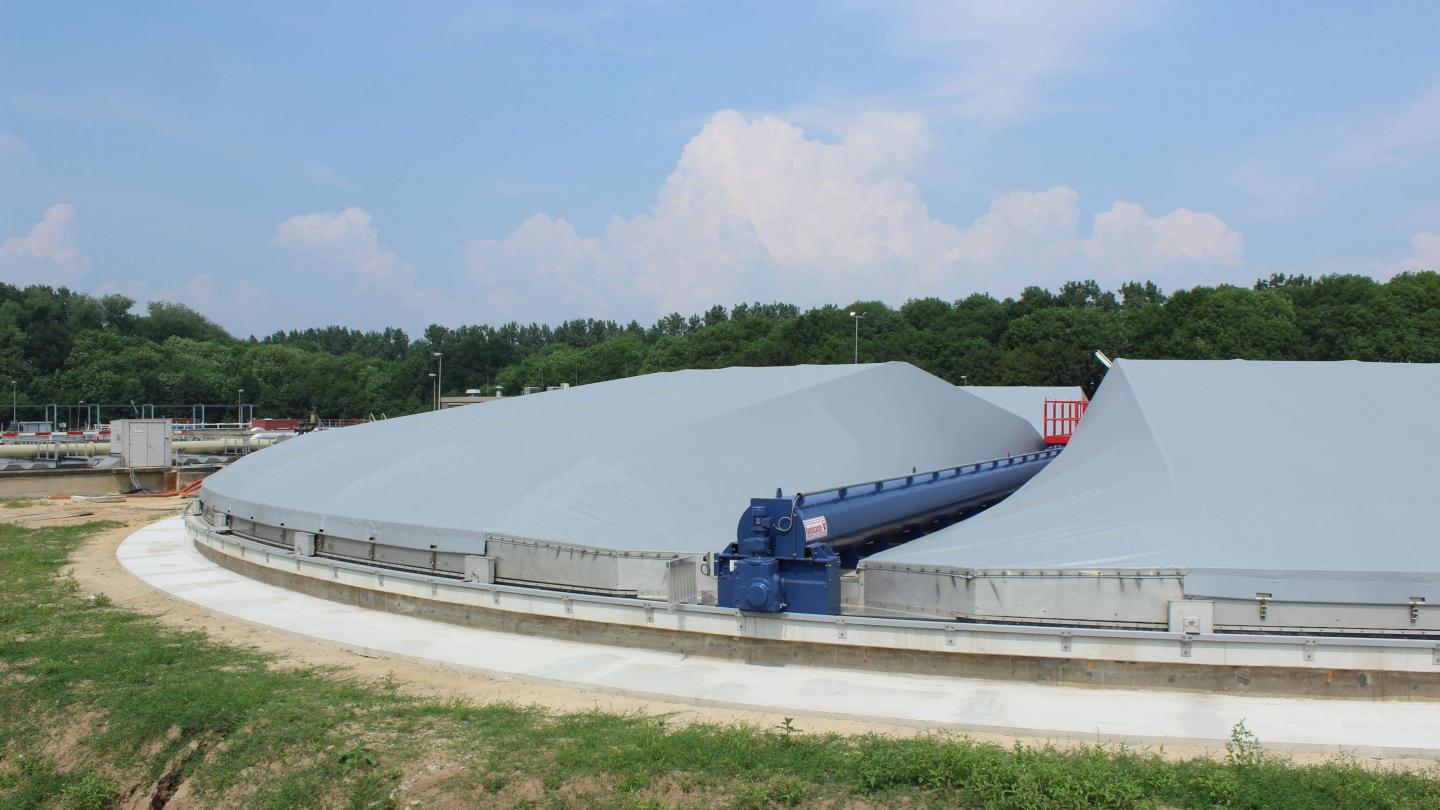Sludge Thickener
Sludge is an important by-product in the waste-water treatment process. The dewatering of sludge, consisting of 99% water, is done by means of a sludge thickener. The sludge is stored for a few days in round basins in which a slowly revolving paddle enables the sludge to solidify, due to the influence of gravity, thus becoming a substance with a dry matter content of 2 to 4%.
The paddle homogenizes and breaks down the sludge layers which in turn allows the water to separate so that the sludge can sink more rapidly to the bottom before being transferred to the sludge collector by means of the sludge scrapers.

At Vandezande, a sludge thickener consists of the following main components:
Bridge structure
The bridge is made of metal profile beams or of concrete and spans the entire basin.
Drive unit
The drive unit of the paddle is mounted on the bridge structure and is realised by means of a geared motor, with a pinion on the output shaft of the gearbox, engaging the ring gear. This in turn is flanged onto the central tube of the paddle and the sludge scrapers. A mechanical torque limiter switches off the motor when the maximum admissible torque is exceeded.
Paddle
The paddle consists of a framework of vertical bars and is connected to the central tube by means of a specially designed frame covering the entire diameter of the sludge thickener.
Scraper mechanism
The scrapers are equipped with adjustable rubber strips ensuring optimum removal of the thickened sludge. The scraper arms are attached to the central tube by means of profiles.
Infeed drum
The sludge is fed into a central cylinder that flows into the top of the infeed drum. The infeed drum forces the medium into the underlying sediment and thus preventing a short-circuit flow between the central cylinder and the overflow edge.

Environmentally conscious infrastructure
Vandezande’s activities all fit within the scope of working on an environmentally conscious infrastructure. The construction of new locks to take transport off the road and group it in the form of shipping transport in order to further...
read more
